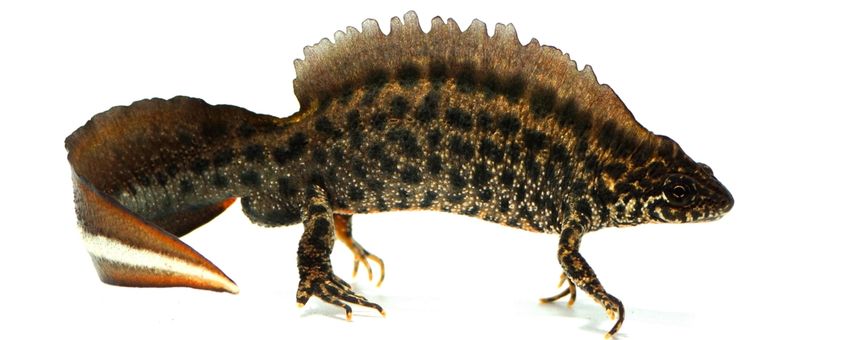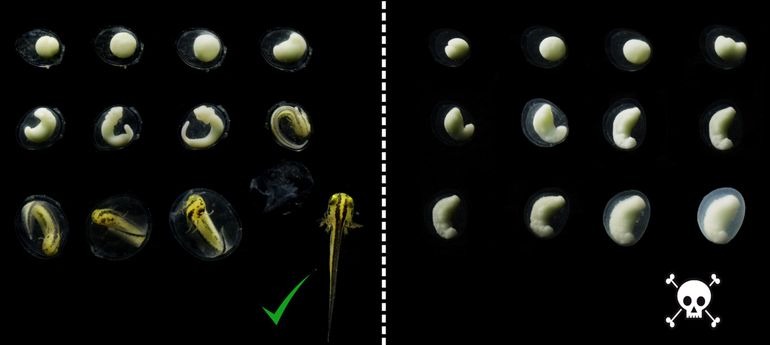
The fact that half of the eggs of Triturus newts consistently do not hatch, has been discovered and described already two centuries ago. Today, this phenomenon is known as ‘chromosome 1 syndrome’. Scientists of the Institute of Biology Leiden (Leiden University) collaborate with Naturalis to investigate the DNA of these newts in order to figure out why half of the eggs do not survive.
Elaborate mating dance
Chromosome 1 syndrome poses an evolutionary mystery. Manon de Visser, one of the researchers, explains why: “The appearance of a male newt changes during the breeding season, as it grows a beautiful crest. They show off this crest during an elaborate mating dance to seduce females. Later on a female newt will lay her eggs one by one, with precision: she will carefully fold them in between the leaves of the underwater vegetation. So, both parents invest a lot of energy in the reproduction. If you come to think of it - that half of those eggs are bound to die no matter the circumstances - it makes you realize how bizarre this syndrome actually is. You would never expect something this inefficient to evolve.”

Illogical phenomenon
The research focuses on determining how this heritable syndrome works exactly, but also on the question: how can it be that a trait this disadvantageous somehow still evolved? The salamanders have probably walked into an evolutionary trap: natural selection does not plan ahead and can therefore select a trait that is beneficial in the short term, but turns out to be dramatic in the long run. The researchers introduce the phenomenon in the recently published Dutch magazine of RAVON (Reptile, Amphibian and Fish Conservation Netherlands).
Manon's DNA talk 1: een vreemd salamandersyndroom. In Dutch with English subtitles (Bron: Naturalis Biodiversity Center)
More information
- The Dutch article 'Een evolutionair raadsel: het dodelijke chromosoom 1 syndroom in Triturus-salamanders' (pdf: 2,2 MB) has appeared in RAVON.
Tekst: Manon de Visser en Ben Wielstra, Leiden Universiteit en Naturalis Biodiversity Center
Photo's: Micheal Fahrbach (leadfoto: male Balkan crested newt (Triturus ivanbureschi))
Film: Naturalis Biodiversity Center
